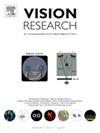视觉诱发电位的三极记录与传统脑电图记录的比较
IF 1.4
4区 心理学
Q4 NEUROSCIENCES
引用次数: 0
摘要
头皮记录脑电图(EEG)是一种有效的量化大脑活动的方法,因为它是无创的,具有很高的时间分辨率。尽管如此,脑电图仍然极易受到生理和非生理噪声的影响。三极同心圆电极(TCREs)提供了一种EEG测量(tEEG),其设计对外来噪声源具有鲁棒性。以前的研究已经证明,在高生理噪声环境下,如肌肉相关电位和癫痫检测,这种益处。然而,很少有人研究这种技术在视觉神经科学中的功效。本研究比较了传统脑电图和瞬变脑电图的噪声特征,以及瞬变脑电图和模拟传统脑电图同时记录的模式反转视觉诱发电位的形态。我们的研究结果表明,这两种方法在质量上具有相似的噪声分布,tEEG对线路噪声(即60 Hz及其谐波)的鲁棒性明显更高。此外,虽然诱发电位的整体形态是相似的,但波形的主要峰潜伏期的系统差异表明这两种方法检测到的信号并不完全相同。由于TCRE的电极结构不同,我们假设观察到的差异反映了对模式逆转刺激的潜在神经反应的时空几何。综上所述,本研究的结果表明,tEEG非常适合于人类视觉处理的研究,不仅提供了对非生理性噪声源的增强鲁棒性,而且为研究人类大脑中视觉处理的时空动态提供了新的机会。本文章由计算机程序翻译,如有差异,请以英文原文为准。
Comparison of tripolar and traditional EEG recording of the visual evoked potential
Scalp-recorded electroencephalography (EEG) is an effective method to quantify brain activity because it is noninvasive and has high temporal resolution. Even so, EEG is highly susceptible to physiological and non-physiological noise. Tripolar concentric ring electrodes (TCREs) provide an EEG measure (tEEG) designed to be robust to extraneous sources of noise. Previous studies have demonstrated this benefit in settings of high physiological noise such as muscle-related potentials and seizure detection. However, less has been done to study the efficacy of this technology in visual neuroscience. This study compares the noise profiles of traditional EEG and tEEG as well as the morphology of the pattern-reversal visual evoked potential recorded simultaneously using tEEG and emulated traditional EEG techniques. Our results indicate the two approaches have qualitatively similar noise profiles with the tEEG being significantly more robust to line noise (i.e. 60 Hz and its harmonics). In addition, while the overall morphology of the evoked potentials are similar, systematic differences in the latencies of the primary peaks of the waveforms indicate the two approaches do not detect exactly the same signal. Arising from the distinct electrode configuration of the TCRE, we hypothesize that the observed differences reflect the spatiotemporal geometry of the underlying neural responses to the pattern-reversing stimulus. Taken together, the results of this study suggest that tEEG is well suited to the study of human visual processing and offers both increased robustness to non-physiological sources of noise and a new opportunity to study the spatiotemporal dynamics of visual processing in the human brain.
求助全文
通过发布文献求助,成功后即可免费获取论文全文。
去求助
来源期刊

Vision Research
医学-神经科学
CiteScore
3.70
自引率
16.70%
发文量
111
审稿时长
66 days
期刊介绍:
Vision Research is a journal devoted to the functional aspects of human, vertebrate and invertebrate vision and publishes experimental and observational studies, reviews, and theoretical and computational analyses. Vision Research also publishes clinical studies relevant to normal visual function and basic research relevant to visual dysfunction or its clinical investigation. Functional aspects of vision is interpreted broadly, ranging from molecular and cellular function to perception and behavior. Detailed descriptions are encouraged but enough introductory background should be included for non-specialists. Theoretical and computational papers should give a sense of order to the facts or point to new verifiable observations. Papers dealing with questions in the history of vision science should stress the development of ideas in the field.
 求助内容:
求助内容: 应助结果提醒方式:
应助结果提醒方式:


